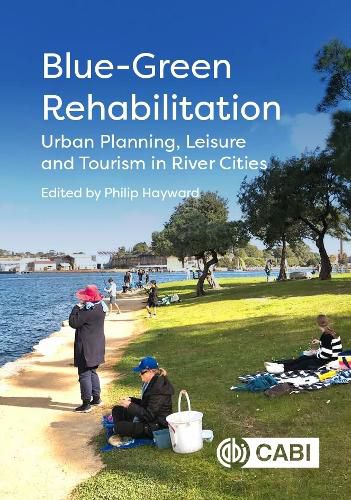Readings Newsletter
Become a Readings Member to make your shopping experience even easier.
Sign in or sign up for free!
You’re not far away from qualifying for FREE standard shipping within Australia
You’ve qualified for FREE standard shipping within Australia
The cart is loading…






In recent decades there has been a burgeoning interest in the development of blue-green corridors: areas where waterways are complemented by adjoining green spaces and related paths and leisure facilities. Urban planners have increasingly favoured such zones as a means of refreshing inner-city spaces. In many cases, such projects have involved the rehabilitation of former industrial and/or otherwise polluted waterways and adjacent land. These newly configured blue-green spaces have benefitted residents and provided a substantial attraction to tourists through in- and on- the water options (e.g., swimming, kayaking, fishing, cruise boat transit etc.), waterside relaxation and a range of riverbank activities. The establishment of managed green spaces has also seen the return of a variety of native species to such areas and the re-presentation of former waterside industrial features as heritage artefacts has also added value and appeal to such corridors. The anthology comprises nine international case studies that illustrate examples of best practice and/or the problems that can arise from such rehabilitations, such as gentrification (forcing housing prices up and dispersing established communities) and de-industrialisation that leads to reduced livelihood opportunities. Individual studies in the volume analyse the dynamics of neglect and rehabilitation, contrasting stakeholder agendas, destination branding and regional-national orientations. Collectively, the volume comprises an important reference point for future blue-green rehabilitation projects and the conclusion offers an agenda for the development of just and sustainable blue-green initiatives.
$9.00 standard shipping within Australia
FREE standard shipping within Australia for orders over $100.00
Express & International shipping calculated at checkout
Stock availability can be subject to change without notice. We recommend calling the shop or contacting our online team to check availability of low stock items. Please see our Shopping Online page for more details.
In recent decades there has been a burgeoning interest in the development of blue-green corridors: areas where waterways are complemented by adjoining green spaces and related paths and leisure facilities. Urban planners have increasingly favoured such zones as a means of refreshing inner-city spaces. In many cases, such projects have involved the rehabilitation of former industrial and/or otherwise polluted waterways and adjacent land. These newly configured blue-green spaces have benefitted residents and provided a substantial attraction to tourists through in- and on- the water options (e.g., swimming, kayaking, fishing, cruise boat transit etc.), waterside relaxation and a range of riverbank activities. The establishment of managed green spaces has also seen the return of a variety of native species to such areas and the re-presentation of former waterside industrial features as heritage artefacts has also added value and appeal to such corridors. The anthology comprises nine international case studies that illustrate examples of best practice and/or the problems that can arise from such rehabilitations, such as gentrification (forcing housing prices up and dispersing established communities) and de-industrialisation that leads to reduced livelihood opportunities. Individual studies in the volume analyse the dynamics of neglect and rehabilitation, contrasting stakeholder agendas, destination branding and regional-national orientations. Collectively, the volume comprises an important reference point for future blue-green rehabilitation projects and the conclusion offers an agenda for the development of just and sustainable blue-green initiatives.